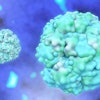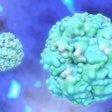Swedish researchers are mapping patterns of protein biomarkers in sepsis that could be useful for simple blood tests in the emergency department, according to research to be presented at the 2024 European Congress of Clinical Microbiology and Infectious Diseases (ECCMID) in Barcelona, Spain, from April 27 to April 30.
Led by Drs. Adam Linder and Lisa Mellhammar from Lund University, the work revolves around molecular signatures associated with the clinical signs of sepsis, a complex and often life-threatening infection that occurs when the immune system overreacts to an infection in the body.
The National Institutes of Health (NIH) has acknowledged that there is no specific diagnostic test or treatment protocol for sepsis other than supportive care for the health problems resulting from sepsis and therapy to fight infectious agents that may be the underlying cause. However, there are unknown biological characteristics in the body that may increase or decrease a person’s susceptibility to sepsis and cause some people to decline rapidly while others recover quickly.
Research is underway worldwide to study the genes and biomarkers closely associated with sepsis and the different types of organ failure sepsis can cause.
“It’s vital that patients with suspected sepsis are identified prior to the onset of organ failure," Mellhammar explained ahead of the ECCMID presentation. "Given the challenges associated with timely diagnosis and the fact that sepsis kills millions of people around the world every year, there is an urgent demand for an alternative approach.”
For their study, the Lund researchers investigated the distinct proteomic signatures (patterns of proteins) associated with different clinical symptoms and outcomes of sepsis.
Using mass spectrometry to analyze plasma samples and generate comprehensive molecular maps, researchers gained better understanding of predictive patterns with septic shock and used the data to train a machine-learning model for classifying patients as having low, medium, or high probability of septic shock.
In addition, the researchers mapped the protein signatures in relation to six types of organ dysfunction (kidney, liver, lungs, heart, central nervous system, and hematologic system) with sepsis infections.
“A fast test that provides more accurate sepsis diagnosis and could also predict who is at greater risk of poorer outcomes now seems a genuine possibility," Mellhammar added. “Any research like this needs clinical validation and many hurdles must be cleared before these biomarkers are used in the clinic."
The Swedish Research Council has funded a "personalized bench-to-bedside approach" for prediction and treatment of short- and long-term complications in sepsis. The project runs through December 31, 2027, according to details from Lund University's website. The results will be validated in a large "Sepsis Alert" cohort.
Mapping the time dynamics in acute sepsis and identifying subphenotypes will facilitate precision medicine and reduce the impact of antimicrobial resistance, according to Linder, the principal investigator.
Moreover, if the research bears out, it could provide more accurate sepsis diagnosis and prognosis, and possibly be used to target specific therapies worldwide.



















